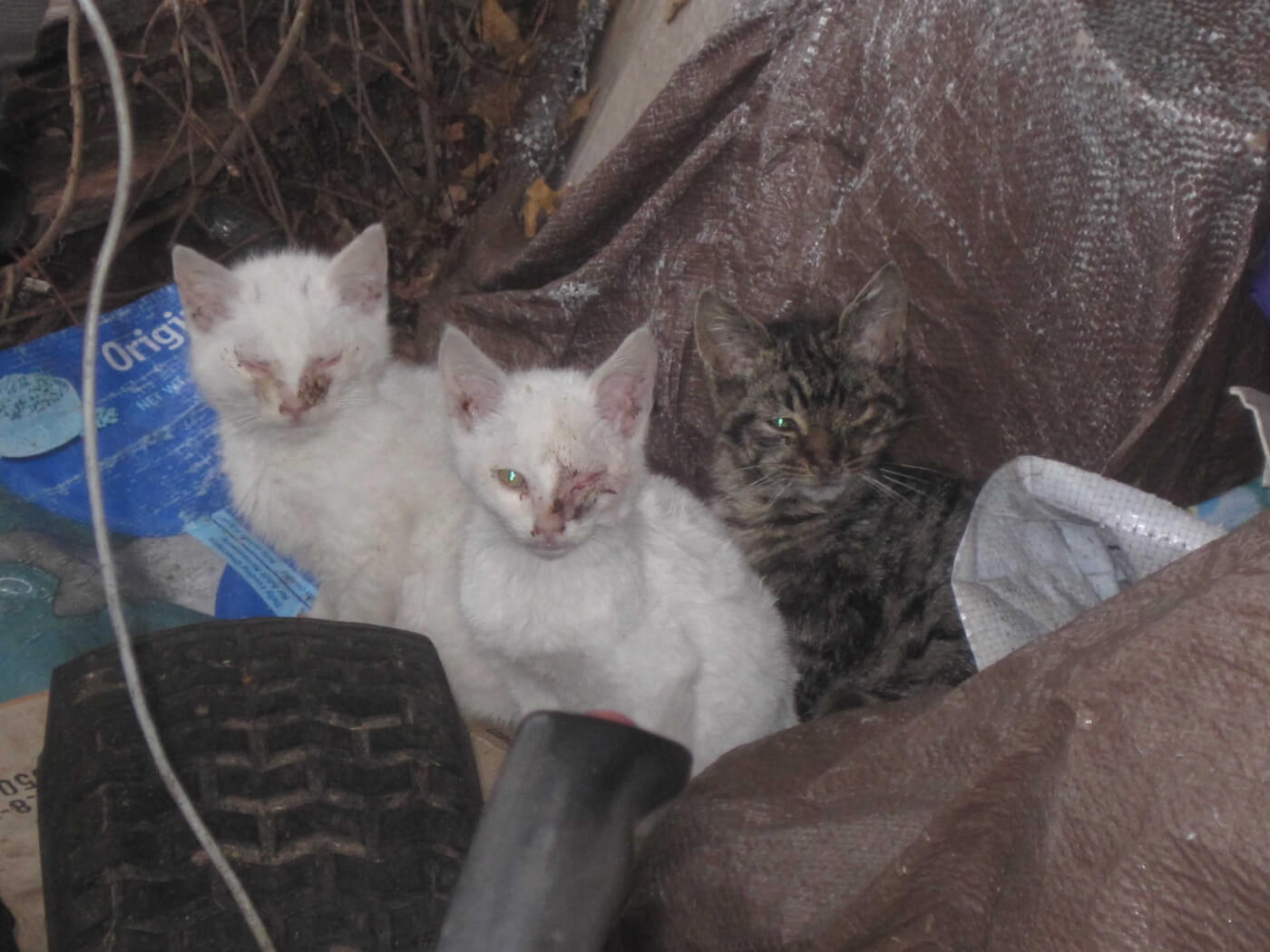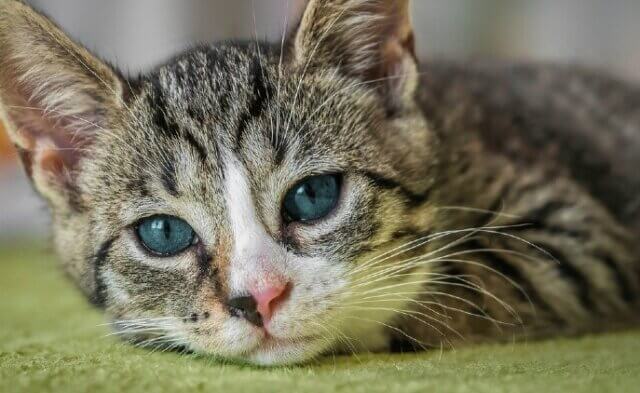Please enjoy this article from the latest issue of our magazine, PETA Global. To begin your subscription, become a PETA member today!

But are cats who are turned back out onto the street actually saved? The statistics say otherwise. The average lifespan of a stray or feral cat is less than 3 years, compared to 12 to 15 years for an indoor cat. So when people turn cats loose, they usually aren’t buying them much time.
Some worry that those taken to shelters will be euthanized, but the very definition of euthanasia is “good death.” Outdoors, cats’ deaths are inevitably very bad. They die from contagious diseases, dehydration, exposure, attacks by predators (including cruel humans), being hit by cars, and other terrible causes.
Shelters are even abandoning tiny kittens to face these hazards. After a Kentucky woman found a malnourished kitten with an upper respiratory infection and a bloody wound on her abdomen and tried to take her to the shelter, staffers admitted that they had TNR’d her and planned to simply dump her back outside, untreated, because “cats do just fine out there.” Appalled, the woman kept the kitten and took her to a veterinarian herself.
Aside from the dangers associated with turning cats loose to fend for themselves, there are the dangers that they pose to wildlife, whose welfare can’t simply be ignored or dismissed by defenders of all animals’ rights. Cats are the leading cause of human-related bird and mammal deaths, killing up to 26 billion animals every year just in the US alone.
On top of that, TNR doesn’t even reduce homeless cat populations. It can actually encourage more people to abandon their cats under the mistaken assumption that they’ll be cared for. Also, the food set out for cat colonies attracts wildlife, including rats, who, a recent study revealed, are not very affected by cats, as well as coyotes, who tend to eat the cats along with the kibble.

As my cat naps peacefully on my bed, I shudder to think how close she came to becoming another statistic. Because a shelter was unwilling to face the fact that TNR means a difficult, uncertain, and often miserable life and painful death and would not save her, she had to find a way to save herself.
Take Action Now
If your local shelter turns away or abandons cats, tell the board that cats’ safety and well-being, not feel-good statistics, should be its top priority.






